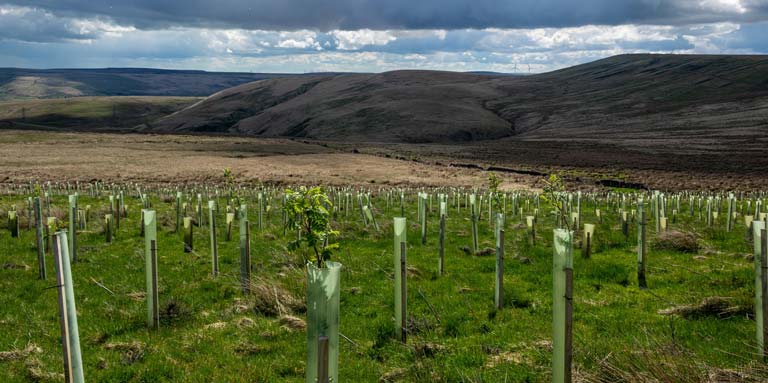Guest post from the United Bank of Carbon team at the University of Leeds
The White Rose Forest published their Action Plan for 2021 – 2025 in November 2021, which proposes the planting of up to seven million trees across West and North Yorkshire. As part of the planning for this ambitious Action Plan, the White Rose Forest wanted to assess the potential for carbon storage through different levels of woodland creation across the region. The United Bank of Carbon (UBoC) and the University of Leeds were therefore asked to make scientifically rigorous estimates of possible carbon uptake.
UBoC is a registered environmental charity protecting, planting, and restoring trees and forests, both in the UK and across the world. UBoC develops methods to better understand the dynamic relationships between trees, natural and urban environments, and people. UBoC also provides a robust scientific underpinning for policy makers, to ensure that our research has real world impact that benefits both the planet and people.
To answer the question about potential carbon uptake, UBoC produced the report “Informing a carbon based-tree planting strategy for the White Rose Forest”, along with an introduction and technical appendix. This report lays out the possible carbon sequestration over time from different levels of indicative planting, as well as how this would compare with the amount of residual CO2 still being emitted up to 2050.
The report shows that if emissions reduction pathways are followed then trees planted now across the White Rose Forest region can make a significant contribution to reaching net zero in 2050, in addition to the many non-carbon benefits provided by forests. New woodland creation in excess of 2800 hectares per year across the North and West Yorkshire is likely to be required to sequester up to half of the CO2 emissions that are expected to remain in 2050 – from residual sources after all feasible emissions reductions have been made. The report also shows that trees outside woodlands comprise around 40% of the canopy cover in the White Rose Forest region, collectively taking up almost 360 thousand tonnes of CO2 annually (equivalent to around 2% of 2018 emissions).
The report co-authors and colleagues from the White Rose Forest delivered a webinar on the 24th of January to present our main findings, and to discuss how it can be of use to colleagues in local government, forestry, and beyond. The recorded webinar, which includes a session with our panel, is now available to watch online, and a written Q&A from the event will be available soon.
We hope that the webinar encourages colleagues in local authorities and elsewhere to get in touch with us to see how our model can be applied to woodland creation in their area.
Expert advice on the content of the report as well as a more detailed breakdown of our findings is available from our team. Contact us on info@uboc.co.uk or visit our website www.uboc.co.uk for further information.
